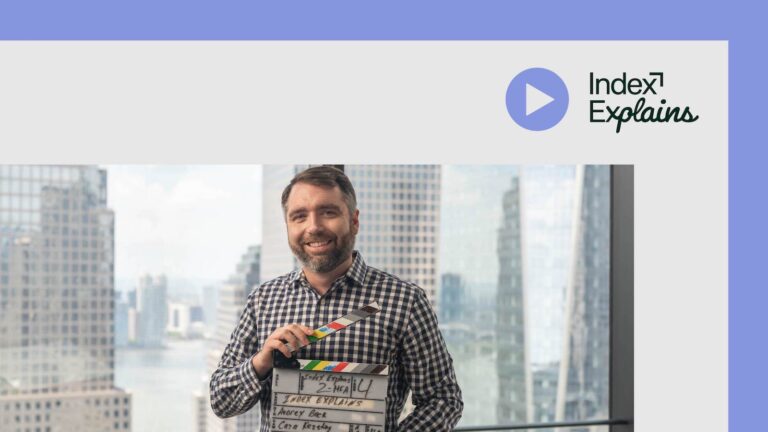Protecting your campaigns from ad fraud
While news stories about ad fraud may grab attention, they often miss the bigger picture. Brand safety and ad fraud are real concerns, but understanding the scope and scale of the issue is key to navigating the programmatic ecosystem with confidence.
What do brand safety and ad fraud actually entail? As a marketer, why should you care? And what questions should you be asking your partners to protect your campaigns?
At its core, brand safety is about protecting your brand’s reputation, ensuring your ads don’t appear next to harmful or inappropriate content—think hate speech, violence, adult content, or anything illegal.
But it’s more nuanced than that. Brand suitability is about aligning your ads with the type of content that makes sense for your unique brand. For example, while a breaking news article about a natural disaster might be perfectly legitimate journalism, it might not be suitable content for a family travel brand’s ad.
How to enforce brand safety and suitability
To enforce brand safety and suitability, brands and their partners rely on a mix of automated tools and human oversight. Most brand safety vendors today use systems like keyword exclusion lists, URL and domain analysis, and contextual targeting parameters to assess the environments where ads might appear.
These tools help flag or filter out content that doesn’t align with a brand’s standards before an ad is served. But automation isn’t foolproof. That’s why responsible platforms also invest in human review and editorial oversight—especially for edge cases or nuanced content that automation may misinterpret.
Equally important is the role of the broader ecosystem. Platforms like SSPs should have their own quality assurance protocols in place—vetting media owners, auditing inventory, and partnering only with sources that meet strict content and transparency standards.
Think of it as a layered defense system: automated brand safety tools to filter in real time, people to provide judgment and escalation, and platforms that set the bar for who gets to participate in the first place.
Defining ad fraud and invalid traffic
Now let’s talk about ad fraud, which includes invalid traffic (IVT). Broadly, IVT describes page views, ad impressions, or clicks that aren’t generated by real people.
There are two types of IVT:
- General IVT (GIVT) is traffic that’s typically not malicious, like bots used by search engines to index pages. GIVT is more easily detected via simple bot detection methods, such as known crawler lists.
- Sophisticated IVT (SIVT) is where we see intentional, malicious behavior. SIVT is driven by bad actors who use advanced techniques to generate invalid traffic or ad behavior. They use malware, spoofing, click farms, and increasingly, AI tools, to obfuscate traffic and evade detection. That means SIVT requires more advanced analysis and human intervention to detect.
Importantly, while general IVT contributes to inefficiency, sophisticated IVT is intentionally deceptive and financially damaging.
Both are problems, but they require different layers of protection.
How to catch and prevent ad fraud
Ad fraud headlines often spark alarm, but perspective is helpful. Programmatic operates at massive scale. At Index alone, we process over half a trillion opportunities every day. True fraudulent activity is minuscule in comparison.
It’s a bit like hearing about one fraudulent credit card charge and assuming the whole online banking system is broken. It doesn’t mean that the risk isn’t real—it just means that precision and context are critical to addressing it effectively.
So how do we catch this? Preventing fraud requires a multi-pronged approach involving technical solutions as well as the relationships you have with your partners.
First, let’s look at technical detection, which happens both before and after a bid:
- Pre-bid detection uses tools to evaluate the bid request before the ad is served based on known patterns and signals. If something looks suspicious, it’s filtered out before your ad runs.
- Post-bid detection uses tools to assess impressions after they’re served. These tools can detect any IVT that slipped through and then feed that insight back into the system to continue training the detection models.
This creates a feedback loop. Post-bid insights strengthen pre-bid filters. It’s important to note that in many cases, if an ad is flagged for IVT after the fact, brands don’t pay for it. That impression is invalidated, and depending on the contract, the spend is reimbursed.
And yes, AI is making this landscape more complex. The increase in AI-driven crawlers is adding to general IVT. AI is also enabling more sophisticated fraud. On the other hand, AI is powering smarter detection. That’s why it’s critical to work with partners who stay ahead by constantly updating models and adapting to evolving threats.
Smart questions to ask your partners
Remember, there are multiple players involved in the supply chain—each one impacting where your ad shows up and how it performs.
Ultimately, it comes down to a very familiar principle: know who you’re working with.
Vet your partners. Understand their practices. And don’t be afraid to dig into the data. Because when it comes to brand safety and quality, trust should be earned—and verified.
Here are a few smart questions to ask your partners:
- Who are your brand safety and fraud vendors, and what protections do they offer pre- and post-bid?
- What’s your policy on IVT?
- How do you vet inventory and partners?
- What quality assurance measures do you have in place?
- What reporting do you have available?
- Is all inventory compliant with transparency standards like ads.txt, sellers.json, and SupplyChain object?
Getting clear answers to these questions will help to ensure that you’re not just investing in media—but in media you can trust.
A safer approach to digital advertising
In a world where digital campaigns are only getting more complex, brands can no longer afford to leave these details to chance. By understanding what brand safety and fraud actually entail, and by asking the right questions, you can ensure your advertising dollars are working smarter, safely, and with integrity.
Want to safeguard your campaigns with greater confidence? Contact us to learn how Index Exchange approaches brand safety, fraud prevention, and quality at scale.
Thank you to Jeremy Grant, senior product manager at Index Exchange, who also contributed to this video.












